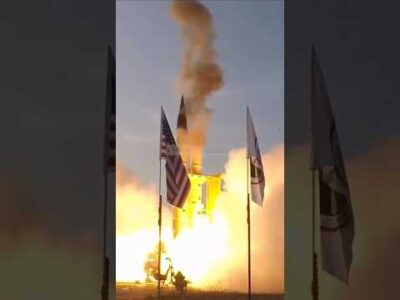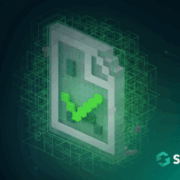Saab has have conducted the first tests with the Saab Lightweight Torpedo (SLWT) from a corvette and a submarine, recently. After the successful trials, the article released by Saab as follows.
The Baltic Sea is one of the most demanding marine environments on the planet. Just 70 metres deep on average, its brackish waters are crowded with rocks, islands, and small caves that make naval operations arduous and extremely challenging.
But these same characteristics also make the Baltic an ideal testing ground for developing sophisticated torpedoes. With the world’s navies looking for defence systems that can manage increasingly complex combat situations, a new lightweight torpedo system is about to begin testing in the demanding waters off Sweden’s east coast.
“In blue water (open sea) operations, a torpedo just needs to be able to go deep and achieve high speed to catch the target,” explains Thomas Ljungqvist, Sales Director for Weapons and Sensors at Saab’s Business Unit Underwater Systems. “But in shallow waters like the Baltic Sea, you need a variety of speeds. You need a torpedo that can go slow until it has a lock on the target and can then speed up for the full attack, so a more sophisticated system.”

Advanced propulsion system for increased effect
However, Ljungqvist explains that it will also boast a range of new features that make it an even more effective tool for modern navies. “The new version will have a greater range of speeds, meaning it can go both faster and slower, depending on the situation it’s in,” he says. “It will also have a completely new propulsion system. While Torpedo 45 is propeller-driven, the new torpedo will use a pump jet system, making it quieter, more powerful and more efficient in terms of battery use.”
Users of the system will also benefit from major advances to the homing and navigational systems which will be updated in line with today’s sophisticated computational systems. “And the system is fully adaptable as new technology evolves in future.”
Adapted for the modern warfare
Ljungqvist explains the modifications will make the torpedo even more suitable to the rapidly changing global defence environment, where there are even greater requirements on weapons to be precise and efficient. “Today, it’s very seldom that you have a full-scale war where two countries are fighting each other,” he says. “Instead, we are seeing more low-conflict scenarios where small-scale clashes are outside of war and where there’s civilian traffic around. You absolutely need to have a true target indication on your weapon systems.”
Ljungqvist says the new generation torpedo system will address this need for precision in a variety of ways. Like the current Torpedo 45, the new system will employ a wire-control system. This will allow operators to target enemy assets with precision and safely abort attacks when required, for example, if a civilian or other friendly vessel is at any risk.

“You can direct the torpedo to stop or select another target,” says Ljungqvist. If the wire breaks, the torpedo will either go for the designated target and kill it or in peacetime, abort the mission and go into safe mode.”
The power to overcome countermeasures
Ljungqvist says that the new torpedo has a more efficient power system and more sophisticated guidance systems that will help it to overcome increasingly advanced submarine countermeasure systems.
“Modern torpedoes need a homing system that can differentiate between countermeasures and the true target and have the endurance to continue the attack until the countermeasures are gone or the homing system has identified the target.”
Besides orders from the Royal Swedish Navy, launch customer of the system, and the Finnish Navy, Ljungqvist says there are also high levels of interest being expressed by other nations.















Comments